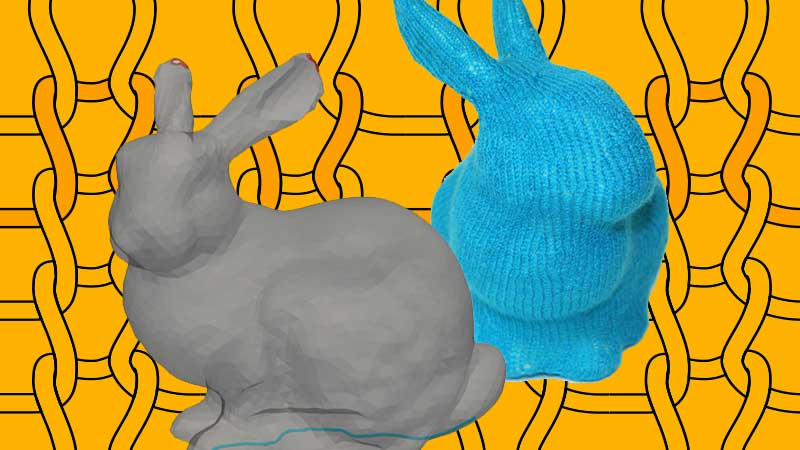We’ve seen our fair share of interesting knitting hacks here at Hackaday. There has been a lot of creative space explored while mashing computers into knitting machines and vice versa, but for the most part the resulting knit goods all tend to be a bit… two-dimensional. The mechanical reality of knitting and hobbyist-level knitting machines just tends to lend itself to working with a simple grid of pixels in a flat plane.
However, a team at the [Carnegie Mellon Textiles Lab] have been taking the world of computer-controlled knitting from two dimensions to three, with software that can create knitting patterns for most any 3D model you feed it. Think of it like your standard 3D printing slicer software, except instead of simple layers of thermoplastics it generates complex multi-dimensional chains of knits and purls with yarn and 100% stuffing infill.
The details are discussed and very well illustrated in their paper entitled Automatic Machine Knitting of 3D Meshes and a video (unfortunately not embeddable) shows the software interface in action, along with some of the stuffing process and the final adorable (ok they’re a little creepy too) stuffed shapes.
Since the publication of their paper, [the Textiles Lab] has also released an open-source version of their autoknit software on GitHub. Although the compilation and installation steps look non-trivial, the actual interface seems approachable by a dedicated hobbyist. Anyone comfortable with 3D slicer software should be able to load a model, define the two seams necessary to close the shape, which will need to be manually sewn after stuffing, and output the knitting machine code.
Previous knits: the Knit Universe, Bike-driven Scarf Knitter, Knitted Circuit Board.
















If my dogs find out, I’ll never hear the end of this…
I bet it wouldn’t be too hard to get it to output a knitting pattern a human (albeit a very patient one) could follow…
They can do all these amazing things, yet can’t figure out how to link documents and videos with the correct HTML tags.
Benchy could use a nice sweater in cold weather.
I was going to mention the possibility of making custom gloves/socks for polydactyls, but the .pdf shows they’ve explored similar ideas.
I’ve got to give them props for the licence they use.
“License
This code is placed in the public domain.”
It’s very rare for such a complex problem to be solved and released as public domain.
feed this machine carbon fibres and kevlar threads
This is a brilliant idea!
Custom knit to shape panels for vehicles, apply to a mold then spray on resin, vacuum bag. All one piece of carbon fiber with no seams, very little waste. Same thing for carbon fiber pressure tanks. 3D knit, saturate with resin then blow form inside a mold, or pull over the same liners used for winding fiber onto.
This is awesome!
It also implies that all the knit 3D shapes I’ve previously seen in stores were designed more manually. Yikes.
I design crochet patterns by hand and yes, not many are aware of the time and attention to detail they recieve. #OtHM is my hashtag if you care to find a maker in the field I’m Off the Hook Mamma
If it can knit a Stanford bunny, can it knit a Utah teapot?
They already did in the paper.
https://drive.google.com/open?id=1UO0aGgbZqidvzgupqrJ–GwazSmIkph2
I bet this could be combined with 3D scanning to make personalized garments.
It might be able to make gloves, socks, and other articles of clothing which are more comfortable for people who are missing body parts due to amputation or birth defects.
Yes, that’s an awesome idea!!
Socks are usually knit in the round as they are much more comfortable that way. Gloves are sometimes sewn together, but are also more comfortable knit in the round. A glove project might work, but it would be perfect for other articles of clothing.
Double bed knitting machines like the one they use can knit in the round (though they are much slower at it than specialized round knitting machines).
Why can‘t it output a knitting pattern for humans? Or does it?
Looks like the software alg. is pretty slow: https://github.com/textiles-lab/autoknit/issues/2
I’m curious to know what kind of knitting machine reads this software? Is it a commercial flat bed electronic machine?